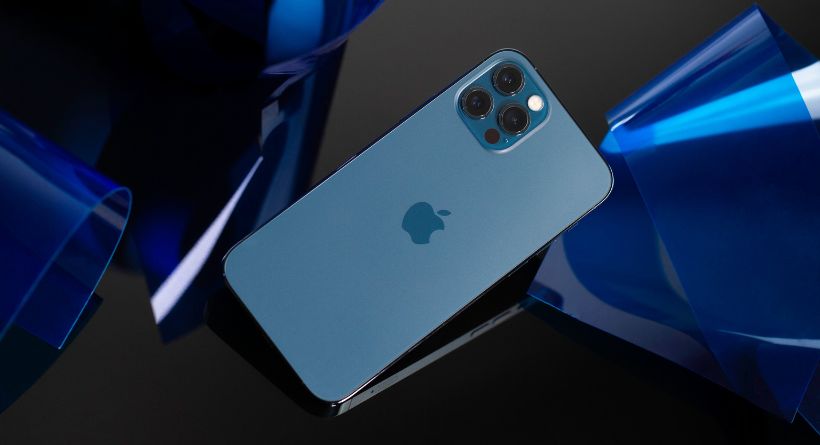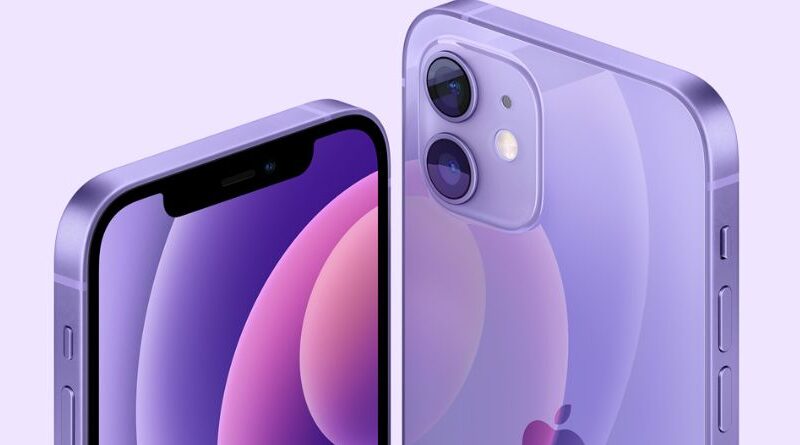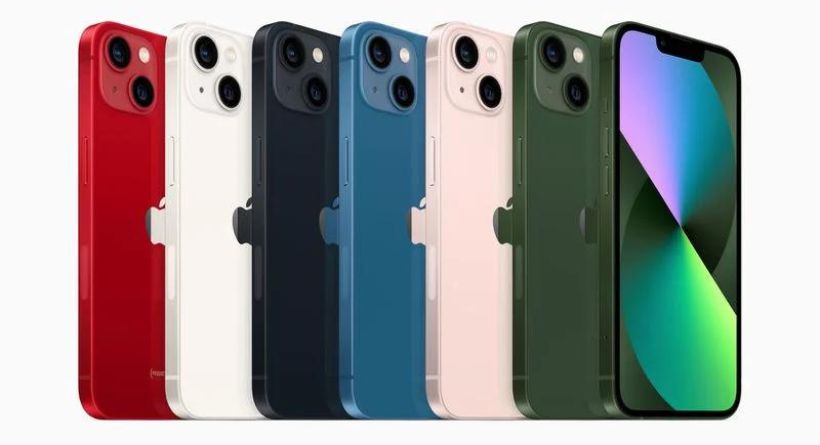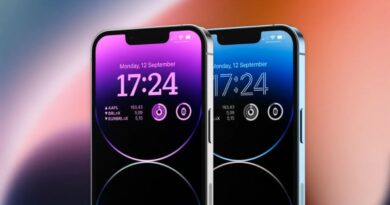iPhone 12
In the fall of 2020, Apple will release its newest flagship model, the iPhone 12. Four handsets in the iPhone 12 series, with screens ranging from 5.4 to 6.7 inches, are equipped with flagship features including a 5G connection, OLED displays, and more.
5G and A14
Support for a 5G connection is one of the key features of the iPhone 12 and iPhone 12 Pro. The only country that supports mmWave 5G is the United States, while other nations as well as the U.S. also support sub-6GHz 5G.
The new A14 Bionic CPU, which employs a new 5-nanometer technique to minimize transistor size, also powers the iPhone 12 and iPhone 12 Pro. The new six-core CPU, according to Apple, is up to 50% quicker than any other smartphone. The new 4-core GPU in the iPhone 12 is up to 50% quicker than that of the rivals.
iPhone 12
Design
Since the iPhone X, the iPhone 12 and 12 Mini represent the first significant overhaul. It sports a flat-edged chassis like the iPhone 4 and iPhone 5, the iPad Pro from 2018, and the fourth-generation iPad Air, which was also announced in 2020. Despite rumors of a narrowing, the notch size remains the same as in earlier iPhone generations. [20] The display’s edges are 35% thinner than on any prior model. The new design also has Ceramic Shield, a front glass that has been ceramically toughened, while Dual-Ion Exchange reinforced glass from the previous version is still used on the rear. [21]
At their “Spring Loaded” special event on April 20, 2021, Apple unveiled a new purple color option that will be made available on April 30. [22]
There are six color options for the iPhone 12 and 12 Mini: Black, White, Product Red, Green, Blue, and Purple.
[21]
Specifications
Hardware
The six-core A14 Bionic processor from Apple, which houses a cutting-edge neural engine, is used in the iPhone 12 and iPhone 12 Mini. They both provide 64, 128, or 256 GB of internal storage[a]. Both also have an IP68 designation for water and dust protection, which means they can withstand moisture for 30 minutes at a depth of six meters (20 feet). However, liquid damage to the phone is not covered by the manufacturer’s guarantee.
Since the majority of customers already own them, the iPhone 12 series is the first to come without EarPods or a wall adapter from the start, according to Apple. This move was made to cut down on waste and carbon emissions. According to Apple, the smaller package allows 70% more boxes to fit on a pallet, significantly decreasing emissions. [23] There is still a USB-C to Lightning cable present. All other iPhone models that are still in production will likewise be affected retrospectively by this change. [24] iPhone models will still come with EarPods in this market to comply with French law governing wireless device radiation and health, which mandates that phones be packed with and encourage the use of hands-free equipment by children under the age of 14. [25]
On the iPhone 12 models, a MagSafe magnetic connector is added, allowing accessories like cases and charging cables to be mounted to the device’s back. Additionally, accessories may be stacked. [26]
The gadgets are capable of 5G cellular communication. These permit download and upload rates of up to 4 Gbit/s and 200 Mbit/s, respectively. [27] The fastest mmWave technology is only supported by models sold in the United States; devices sold everywhere in the globe, including in Canada, only support sub-6 GHz frequency ranges. [28] To protect battery life, a new function dubbed Smart Data Mode only activates 5G when necessary. [29]
Displays

The 6.1-inch (155 mm) Super Retina XDR OLED display of the iPhone 12 has a pixel density of roughly 460 ppi and a resolution of 2532 x 1170 pixels. [31] The same technology is used in the 5.4-inch (137 mm) display on the iPhone 12 Mini, which has a pixel density of roughly 476 ppi and a resolution of 2340 x 1080 pixels. When viewing HDR material that is comparable to the iPhone 12 Pro, both phones have a peak brightness of 1200 nits and a typical brightness of 625 nits. [31] Additionally, both phones employ Ceramic Shield, an upgraded glass-ceramic shell that was created in collaboration with Corning Inc. Apple claims that it is “tougher than any smartphone glass” and has “4 times better drop performance.” [32]
Batteries
The battery capacity of the iPhone 12 is 10.78 Wh (2,815 mAh), which is slightly less than the battery capacity of the iPhone 11 of 11.91 Wh (3,110 mAh) and is the same as the battery capacity of the iPhone 12 Pro. The battery capacity for the iPhone 12 Mini is 8.57 Wh (2,227 mAh). The battery of the current iPhone cannot be replaced by the user. [33]
Chipsets
The Apple A14 Bionic, the first ARM-based smartphone system-on-a-chip (SoC) produced on the 5 nm production node, is included in both the iPhone 12 and 12 Mini. They are not, however, the first Apple products to use the most recent A-series CPU, with that honor going to the fourth-generation iPad Air. Both devices are Qualcomm X55 5G devices.
Cameras
Wide and ultra-wide 12-megapixel back cameras are included on both phones. The f/1.6 aperture on the wide camera, which catches 27% more light than the f/1.8 aperture on the iPhone 11[3], and the seven-element lens give it a 26 mm full-frame equivalency. The ultra-wide camera has a five-element lens, an aperture of f/2.4, and a 13 mm full-frame equivalent. [34]
All cameras now have full-resolution Night Mode capability for photos and time-lapse videos.
[21] Smart HDR 3 has enhanced the original Smart HDR. [34] The first iPhone with 10-bit high dynamic range Dolby Vision 4K video recording at up to 30 frames per second, enabling higher brightness and richer shadow detail. [35]
The 12-megapixel, f/2.2-aperture front-facing TrueDepth camera has this function. The front-facing camera on this model now has Night Mode as well. [21]
Sensors
The sensors in the iPhone 12 and 12 Mini are largely the same as those in earlier iPhone models, dating back to the iPhone X. These consist of a digital compass, an accelerometer, a gyroscope, a barometer, a proximity sensor, and sensors for ambient light and proximity. Additionally, the gadget has a Face ID sensor for biometric verification.
iPhone 12 Pro
Design

With glass and stainless steel borders, the iPhone 12 Pro and iPhone 12 Pro Max are premium smartphones. The screen size of the iPhone 12 Pro is 6.1 inches, while the iPhone 12 Pro Max has a 6.7-inch screen.
Despite having bigger screens, Apple claims that the larger iPhone 12 Pro devices’ form factors are “almost the same” as those of the smaller iPhone 11 Pro models they replace. The iPhone 12 Pro’s frame is constructed from stainless steel, which comes in four distinct finishes and is strong and glossy.
Camera
The iPhone 12 Pro and iPhone 12 differ from one another in terms of their camera technology, as has become standard over the past few years. With a telephoto lens, an ultra-wide lens, and a wide lens, the iPhone 12 Pro has a triple-lens camera arrangement on the rear.
According to Apple, the new wide camera has the quickest aperture ever on an iPhone, resulting in a 27 percent improvement in low-light performance in both photos and videos. Apple claims that the ultra wide’s 120-degree field of vision is even better for taking pictures of large landscapes.
An even bigger wide camera sensor on the iPhone 12 Pro Max results in an 87 percent boost in low-light shooting. According to Apple, the Ultra Wide and Telephoto lens systems together provide a 5x optical zoom capability. Additionally, you receive the same software upgrades as the iPhone 12 with enhanced Smart HDR and Night mode, Dolby Vision video recording, 10-bit HDR video recording, and more.
Finally, the rear of both gadgets has a brand-new LiDAR scanner. The LiDAR Scanner provides AR features, scanning of objects and rooms, and other functions. The LiDAR Scanner also helps to increase capture speed and low-light autofocus.
Colors
Pacific blue, graphite, silver, and gold are the four hues that are offered for both devices.




